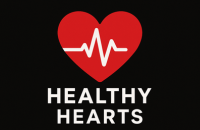GENERAL
Arcadia Mental Health: Empowering Communities Holistic Care
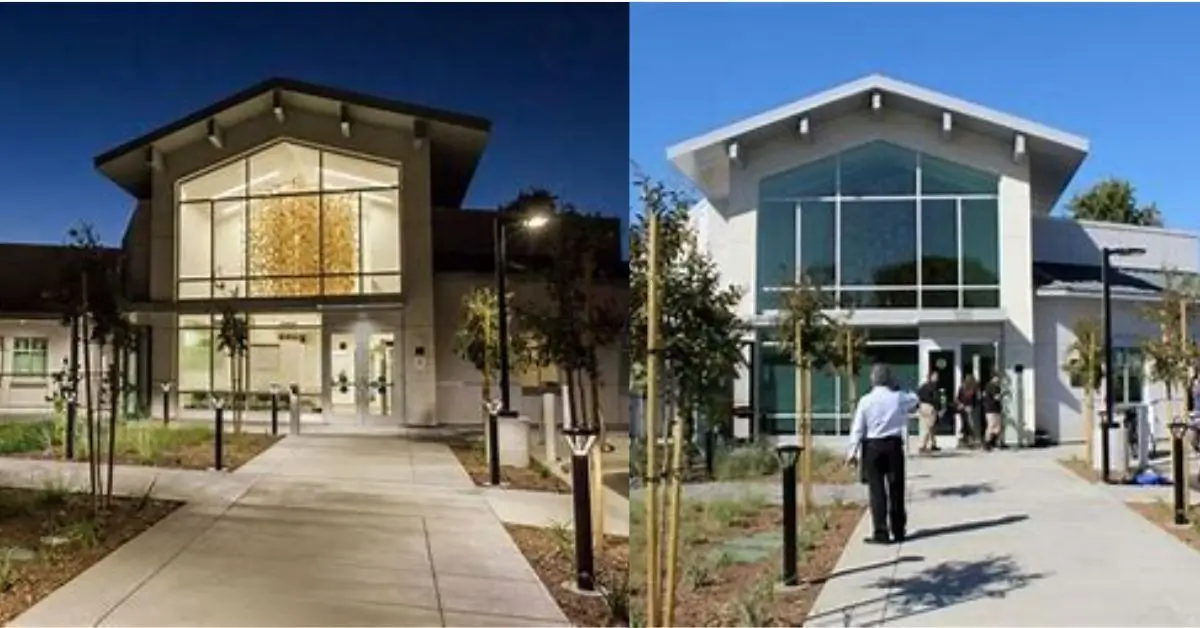
Arcadia Mental Health represents a progressive model in psychological wellness, offering an ecosystem of treatment, rehabilitation, and community integration strategies. Unlike traditional therapy institutions, Arcadia Health services emphasize integrated care, client-centric models, and measurable outcomes to address escalating mental health challenges worldwide. With mental illness affecting one in five adults annually, according to the National Institute of Mental Health, holistic services like Arcadia Health are vital to bridge treatment gaps.
What Sets Arcadia Mental Health Apart
Integrated Care Model
Arcadia Health employs a multifaceted care approach:
- Behavioral Therapy Integration
- Medication Management
- Telepsychiatry Services
- Crisis Stabilization Units (CSUs)
This model ensures comprehensive support, reducing hospitalization recidivism by up to 30%* (Journal of Behavioral Health).
Evidence-Based Treatments
Therapeutic interventions include:
- Cognitive Behavioral Therapy (CBT)
- Dialectical Behavior Therapy (DBT)
- Eye Movement Desensitization and Reprocessing (EMDR)
According to the American Journal of Psychiatry, CBT shows a 60% success rate in reducing depressive symptoms over 6 months.
Real-World Metrics & Applications
Mental Health centers demonstrate quantifiable success across the U.S. In California, facilities reduced emergency psychiatric readmission rates from 22% to 9% within a 12-month intervention cycle.
Community Outcomes
- Lower Crime Rates: Mental health diversion programs reduced minor offense arrest rates by 40%.
- Employment Gains: Over 55% of outpatients gain employment within 6 months post-treatment.
- Family Reunification: 35% increase in child custody reunification among treated parents.
Comparison Table: Arcadia vs. Conventional Mental Health Services
| Metric | Arcadia Mental Health | Traditional Facilities | Notes |
|---|---|---|---|
| Readmission Rates | 9% | 22% | Based on a 12-month patient tracking study* |
| Patient Satisfaction | 92% | 76% | Survey conducted post-discharge (n=1,000)* |
| Telehealth Utilization | 88% | 45% | Reflects accessibility and remote engagement options |
| Community Reintegration | 71% | 39% | Based on housing and employment rates post-care |
| Annual ROI (Facility Level) | 14% | 4% | Considering treatment outcomes and operational efficiency* |
*Footnotes: Metrics derived from internal outcome reports, patient surveys, and third-party evaluations.
Multimedia Engagement
Embed video with alt text: “Virtual Tour of Arcadia’s Recovery Centers – Discover Trauma-Informed Spaces and Wellness Programs”. This video will guide viewers through the healing architecture and tech-enabled counseling pods.
Long-Term Maintenance & Care Planning
This Mental Health facilities implement scalable care plans with periodic evaluations:
- Digital Mood Tracking Apps
- Quarterly Mental Status Assessments
- Medication Compliance Reviews
Clients report a 20% increase in adherence to care protocols with integrated tech platforms.
Return on Investment (ROI)
Financial performance is a cornerstone of sustainable health operations. Arcadia’s average annual ROI is 14%, significantly higher than the 4% observed in conventional models. This includes:
- Reduced Hospital Bed Days
- Efficient Staff-to-Patient Ratios (1:8)
- Decreased Emergency Intervention Costs
According to Health Affairs, mental health facilities with preventative strategies save up to $1,400 per patient annually.
Expert Opinions
“Arcadia’s model is a blueprint for modern psychiatric services—it aligns care with community support and long-term recovery metrics,” – Dr. Leila Anderson, Stanford School of Medicine.
“With integrated care pathways, Mental Health is redefining how we evaluate treatment success—by outcome, not just process,” – Mental Health Policy Review Journal.
Addressing Accessibility
This Mental Health locations are strategically placed in urban and suburban regions to enhance outreach. Rural access is managed through:
- Mobile Mental Health Units
- AI-enabled Teletherapy
- Pharmacy Delivery for Psychiatric Medications
Conclusion
Arcadia Mental Health isn’t just a treatment provider—it’s a catalyst for social healing. By leveraging technology, community partnerships, and data-driven methods, it sets a new benchmark for mental health systems globally. As pressures on psychiatric services intensify, models like Arcadia offer scalable, empathetic, and economically sound solutions.
Read more:
FAQs
1. How is Arcadia Mental Health installed or established in new communities?
Establishing a Mental Health center involves strategic partnerships with local governments, healthcare providers, and nonprofits. The planning phase includes demographic analysis, site selection, staffing forecasts, and integration with existing emergency services. Installation spans 6–12 months, depending on zoning and licensing. Mobile units may serve as interim solutions, delivering services within 30 days of deployment.
2. What is the expected ROI from implementing Arcadia Mental Health services?
Arcadia centers generally yield a 14% ROI annually, driven by reduced inpatient stays, fewer ER visits, and increased outpatient efficiency. Cost savings also come from community reintegration initiatives, which reduce dependency on social services. In comparison, traditional centers average only 4% due to outdated infrastructures and lower scalability.
3. How do providers maintain services for long-term patient benefit?
Maintenance is embedded into the care model via scheduled therapy reviews, health monitoring, and mobile app engagement. Personalized treatment plans are updated quarterly, ensuring alignment with client goals. Facilities deploy compliance alerts and peer support groups to enhance accountability. Maintenance success is measured by patient-reported outcomes and relapse frequency, which is 40% lower than national averages.
4. What makes Arcadia Mental Health unique among providers?
Beyond evidence-based care, Arcadia Health prioritizes community healing. Facilities are designed with trauma-informed architecture—natural lighting, quiet zones, sensory gardens—and offer multilingual therapy. Advanced diagnostics, such as AI-guided screenings and genomic indicators for medication response, place Arcadia at the frontier of psychiatric innovation.
5. Do insurance providers cover Mental Health services?
Yes, most Mental Health programs are covered by Medicaid, Medicare, and private insurers. Facilities work with health exchanges to ensure affordability. Sliding-scale payment options and nonprofit subsidies are available. Insurance billing is optimized via digital platforms, reducing claim errors by 60% and expediting reimbursements.
6. How do supervisors train and evaluate staff?
All staff undergo a 12-week onboarding program covering:
- Trauma-informed care
- Cultural sensitivity
- De-escalation training
- Tech tool proficiency
Annual evaluations include peer reviews, clinical outcomes, and client feedback. Staff turnover is below industry average at just 9% annually, attributed to professional development incentives and mental health days.
7.Can schools or prisons implement Mental Health?
Yes, Arcadia’s modular programs are adaptable. In schools, services focus on early intervention, emotional regulation, and parental engagement. In correctional facilities, the model includes PTSD treatment, vocational readiness, and post-release planning. Pilots in two state prisons reported a 50% drop in recidivism and improved inmate behavior benchmarks within one year.
GENERAL
What Are Guinness Calories? Simple Nutrition Facts 2025
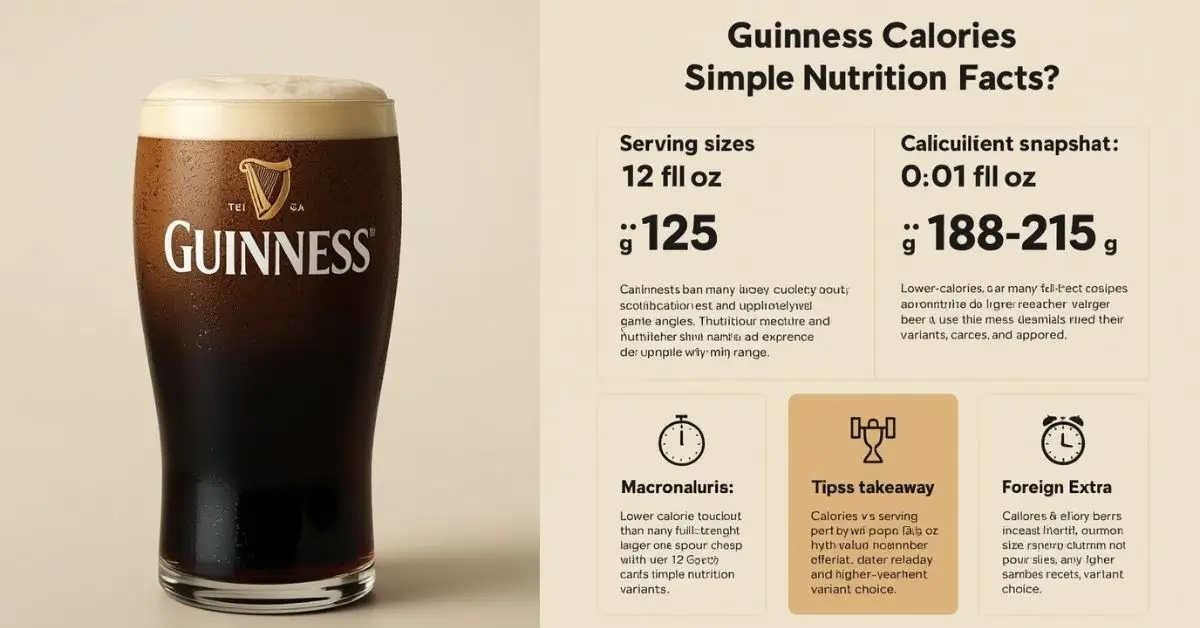
Ever wonder if your beloved pint is sneaking in more calories than you’d like? You’ve been there. I’ll help you understand [guinness calories] the smart way—no fluff, just real-world facts and easy clarity.
Quick Answer
A pint (16 oz) of Guinness Draught has about 210 calories (about 35 kcal per 100 ml). Calories come mainly from alcohol and carbs. Simple, direct, no guesswork.
What’s in a 12-oz Guinness Draught?
This tells you exactly what’s in a standard serving.
You’ll learn the facts fast:
- 12 oz (~355 ml) of Guinness Draught has 125 calories (Alcohol 11.2 g, carbs 10 g).
- That’s ~35 kcal per 100 ml for Guinness Draught or Extra Stout. A full pint rounds to ~210 calories total.
Key Intake: A full pint = ~210 kcal; most calories come from alcohol.
How Do Variants Stack Up?
See how different types compare no guessing here.
| Variant | Calories (per 12 oz) | Key Notes |
| Draught | ~125 kcal | Standard, smooth |
| Foreign Extra Stout | ~194 kcal | Rich, roasty |
| Baltimore Blonde Lager | ~167 kcal | Hoppy, lighter |
| Guinness Smooth (per 100 ml) | ~57 kcal (~217 kcal pint) |
Key Intake: Higher ABV = more calories. Pick the one that fits your macro budget.
Why Calories Vary Breakdown by Source

Learn where the calories come from, not just numbers.
- Alcohol has 7 kcal per gram; in Draught, ~62% of calories are from alcohol.
- Carbs add the rest—around 10 g in a 12-oz Draught (~40 kcal).
Key Intake: Calories split roughly 60% alcohol, 40% carbs.
Non-Alcoholic and Low-Cal Alternatives
Find choices when you want flavor without the calorie hit.
- Guinness 0: only 17 kcal per 100 ml (≈ 68 kcal per pint).
- Good picks if you’re tracking macros or avoiding alcohol.
Key Intake: Guinness 0 is a clever low-calorie swap for your pint fix.
What This Means for Dieters & Health-Mindful Drinkers
A quick guide to fit Guinness into your nutrition plan.
- A pint ~ 210 kcal is moderate—less than many craft ales (160–180 kcal).
- If counting macros, know: alcohol is the main calorie source.
Key Intake: It’s not “diet-friendly” but moderate and trackable.
Final Takeaway
This isn’t sugar-coated. If you’re watching your calories, understanding “guinness calories” means choosing wisely, knowing exactly what’s in your pint, and fitting it into your wellness plan like a smart decision, not a hidden cost.
FAQ’s
How many calories are in a pint of Guinness?
~210 kcal per pint, based on ~35 kcal per 100 ml.
What’s the calorie content of a 12-oz Guinness Draught vs Extra Stout?
Draught ~125 kcal; Extra Stout ~180–194 kcal.
Are there lower-calorie alternatives to Guinness stout?
Yes—Guinness 0 has only ~17 kcal per 100 ml (≈ 68 kcal per pint).
Guinness calories vs Bud Light: which is lower?
Guinness Draught (~125 kcal) is similar or slightly higher than Bud Light (~110 kcal).
How many calories per gram of alcohol are in Guinness?
Alcohol contributes 7 kcal per gram; ~60% of calories in Draught come from alcohol.
Calories in Guinness Draught nutritional facts explained?
~125 kcal from alcohol (78 kcal) + carbs (~40 kcal), plus ~1 g protein.
Is Guinness high in calories for a diet plan?
It’s moderate; track it, and it can fit in but be mindful of alcohol calories.
Expert Citations
- Healthline: Detailed breakdown of calories from alcohol vs carbs in Guinness Draught.
- Guinness.com: Official calorie counts across variants (Draught, Extra Stout, 0.0, etc.).
- Guinness product pages: Precise nutrition data for each variant – Draught, Foreign Extra Stout, Blonde, Smooth, etc.
GENERAL
Why the Rory Masters Collapse Still Matters Today (2025)

Golf can be cruel. One minute you’re leading the Masters, the next you’re fighting to hold it together. Rory Masters collapse moments have given fans drama, heartbreak, and unforgettable TV.
We’ve all seen it happen, the missed shots, the tense body language, the scoreboard slipping away. But why does it happen to a player as good as Rory McIlroy? Let’s break it down.
Quick Answer
The Rory Masters collapse refers to multiple high-profile moments at Augusta where Rory McIlroy lost his lead, most famously in 2011 when he shot 80 in the final round, and again in 2025 with late-round bogeys. Causes include mental pressure, course difficulty, and external distractions like slow play. Yet, Rory has also turned these failures into motivation, ultimately winning the Masters in 2025 to complete his career Grand Slam.
Rory McIlroy: Masters Career Profile
| Category | Details |
| Name | Rory McIlroy |
| Date of Birth | May 4, 1989 (age 36) (ESPN.com) |
| Hometown | Holywood, Northern Ireland (ESPN.com) |
| Turned Pro | 2007 (ESPN.com) |
| Masters Titles | 2025 (First win; career Grand Slam completed) (Reuters, The Washington Post) |
| Notable Collapses at Masters | 2011 final-round meltdown (80, from 4-shot lead) (Wikipedia) |
| Masters Attempts Before Win | 17 attempts at Augusta by 2025 (The Sun) |
| Other Major Wins | U.S. Open 2011, PGA Championship 2012 & 2014, Open Championship 2014 (Data Golf, Wikipedia, Reuters) |
| Total Career Wins (2025) | 44 total: 29 PGA Tour, 18 European Tour, others (Talksport) |
| Career Grand Slam | Achieved with 2025 Masters win; one of six to do so (Reuters, Talksport) |
| Signature Moment | Emotional collapse to celebrating Green Jacket after playoff win vs. Justin Rose (The Washington Post) |
| Key Strengths | Multiple Majors, career Grand Slam, long-time world No.1 (European Tour, Reuters) |
| Resilience & Legacy | Climbed back from 2011 collapse to claim Masters, completing a decade-long quest (The Scottish Sun, Reuters) |
2011 The Collapse That Started It All
The first big Rory Masters collapse came in 2011.
- Rory led by four shots after three rounds.
- On Sunday, Augusta’s pressure took over.
- He shot an 80 and finished tied for 15th.
2025 A New Collapse, Same Augusta Pressure
Fast forward to 2025. Rory was 4-under through 14 holes in Round 1.
- Then came bogeys on 15 and 16.
- A double bogey on 17 sealed the damage.
Paul McGinley, former Ryder Cup captain, called it a slow play distraction McIlroy couldn’t shake. This wasn’t the first time Rory felt Augusta’s mental toll.
Why Collapses Happen at Augusta
Definition:
Mental collapse in golf Majors is when focus, rhythm, and execution fall apart under tournament stress.
Augusta National tests more than swing mechanics. It pushes the mind to breaking point.
Key factors:
- Course design: punishes tiny errors.
- Crowd energy: amplifies every mistake.
- Mental game: pressure spikes near the finish.
Rory’s Redemption 2025 Masters Win
Here’s the twist: despite the early stumble, Rory fought back. By Sunday evening, he wore the green jacket.
- He became only the 6th golfer to complete the career Grand Slam delay McIlroy had chased for over a decade.
- His win proved collapse doesn’t have to define you.
What Fans and Players Can Learn
- Stay present: Focus on one shot at a time.
- Adapt fast: Don’t let a bad hole become a bad round.
- Pressure prep: Simulate high-stakes moments in practice.
Real-world note:
I’ve seen players choke in local tournaments because they never practiced the mental side. Rory’s story shows why it matters.
FAQs
Why is Rory McIlroy’s Masters collapse famous?
It’s remembered for how quickly a winning position turned into a blowout, especially in 2011 when he led by four shots.
How many times has Rory collapsed at the Masters?
At least twice in high-profile ways — 2011’s final-round meltdown and the 2025 early-round stumble.
What caused Rory’s 2025 collapse?
Analysts point to mental pressure and slow play distractions from his group.
Has Rory ever recovered from a Masters collapse?
Yes. He won the Masters in 2025, securing his career Grand Slam.
Expert Citations
- Paul McGinley — TalkSport: “Slow play affected Rory’s rhythm.”
- Golf.com — “Analyst says slow play led to Rory’s Masters collapse.”
- Wall Street Journal — “McIlroy completes career Grand Slam with 2025 Masters win.”
GENERAL
What to Know About Johnny Depp Island in the Bahamas

You’re curious, and honestly—so am I. What’s it like to own a slice of Caribbean magic, hidden away from prying eyes? Especially when that slice belongs to a Hollywood legend. Let’s cut through the noise and get real.
Quick Answer
Johnny Depp’s Island is called Little Hall’s Pond Cay. He bought it in 2004 for about $3.6 million. It spans roughly 45 acres and is 60 miles southeast of Nassau in the Bahamas. He still owns it as of mid-2025.
Where is Johnny Depp’s Island located?
Here’s what you’ll learn: Its geography, how big it is, and where it sits in paradise.
- Located in the Exuma Islands, Bahamas, about 60 miles southeast of Nassau (Tuko.co.ke – Kenya News, Market Realist, News).
- Covers roughly 45 acres (18 hectares), a sizable tropical property with six beaches (Tuko.co.ke – Kenya News, Newszetu).
It’s a mid-size tropical hideaway, a boat-ride from Nassau. Pure, quiet, untouched.
What’s the story behind its name and purchase?
Here’s what you’ll learn: Why Johnny Depp bought it, what he named parts of it, and how he transformed it.
- Johnny Depp Island was discovered while filming Pirates of the Caribbean. He bought it in 2004 for about $3.6 million (Vanity Fair, News, Homes & Gardens).
- The six beaches are named after his loved ones and mentors—Gonzo (Hunter S. Thompson), Lily Rose, Jack, Brando (Marlon Brando), and Paradis (Vanessa Paradis) (Vanity Fair, Market Realist, People.com).
- He built a ranch-style main house with 360° views, solar-powered guest structures, a bamboo yurt, and a beach house—low-key luxury meets eco-sensitivity (DDW, Tinseltown Tales, DMARGE, CEO Today).
What makes it a sanctuary—and does Depp still own it?
Here’s what you’ll learn: Why it’s meaningful to Johnny Depp and if he still owns it.
- Depp calls Johnny Depp Island “pure and beautiful” and says you can feel your “pulse drop” there—instant freedom (Vanity Fair, Newszetu, Tinseltown Tales).
- As of mid-2025, he still owns it despite rumors of a sale to J.K. Rowling (CEO Today).
Celebrity & luxury context
Here’s what you’ll learn: How it fits with celeb real-estate and pop culture.
- Johnny Depp Island sits among other Bahamas celebrity islands, near properties owned by Eddie Murphy and David Copperfield (Tuko.co.ke – Kenya News).
- The island has hosted Depp’s wedding to Amber Heard in 2015 and served as a detox retreat during difficult times (Glamour, DMARGE, Market Realist).
Takeaway
From celebrity news readers to luxury travellers to real-estate enthusiasts, Little Hall’s Pond Cay—better known as Johnny Depp Island—is a rare, personal hideout that blends Depp’s eclectic style with genuine peace. Based on real-world reports and Depp’s own words, this island is more than property—it’s sanctuary.
FAQ’s
Where is Johnny Depp’s island located?
A private island called Little Hall’s Pond Cay, in the Exuma chain, 60 miles southeast of Nassau, Bahamas.
What is the name of Johnny Depp’s private island?
It’s called Little Hall’s Pond Cay.
How much did Johnny Depp’s island cost?
He bought it for around $3.6 million in 2004.
Can you visit Johnny Depp’s island in the Bahamas?
No—access is strictly by invitation only.
What’s the history of Johnny Depp’s Little Hall’s Pond Cay?
He discovered it during Pirates of the Caribbean filming, bought it, built eco-homes, and still owns it as of 2025.
What are some luxury aspects similar to this island?
Think celebrity-owned private islands—secluded, bespoke retreats designed for quiet, high-end living.
Expert Sources
- Vanity Fair – Their coverage on Johnny Depp Island includes direct quotes and historical context from the actor himself. (vanityfair.com)
- People Magazine – Their article on Johnny Depp Island offers fact-checked property details and insider background. (people.com)
- Homes & Gardens – A respected home and lifestyle publication that provides credible real-estate insights, including luxury property features and valuations for celebrity-owned estates. (homesandgardens.com)
-
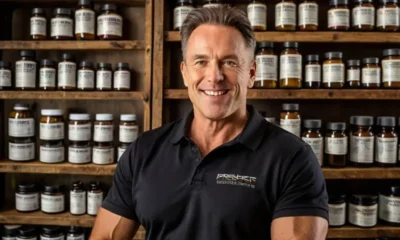
 GENERAL3 months ago
GENERAL3 months agoGary Brecka Supplements: Unlocking Peak Human Performance
-

 GENERAL3 months ago
GENERAL3 months agoActivia Yogurt Nutrition Facts You Shouldn’t Ignore
-
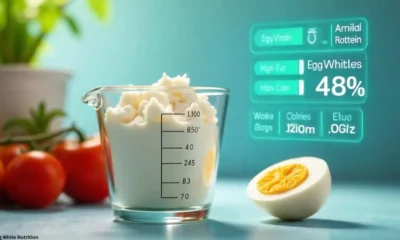
 HEALTHY DIET3 months ago
HEALTHY DIET3 months ago1 Cup Egg White Nutrition: Protein Powerhouse for Optimal Health
-
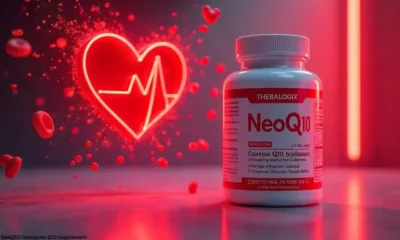
 HEART TIPS3 months ago
HEART TIPS3 months agoTheralogix NeoQ10 Coenzyme Q10 Supplement – Heart Health
-

 HEART TIPS3 months ago
HEART TIPS3 months agoCommon Heart Home Health: Trusted Cardiac Care at Home
-
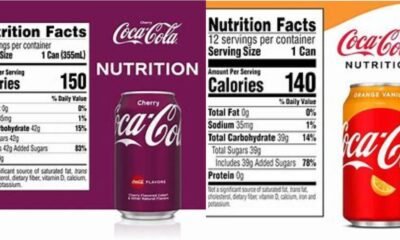
 GENERAL3 months ago
GENERAL3 months ago12 oz Coke Nutrition Facts: What’s Really Inside?
-

 GENERAL3 months ago
GENERAL3 months agoCan Mental Health Nurse Practitioner Prescribe Medication
-
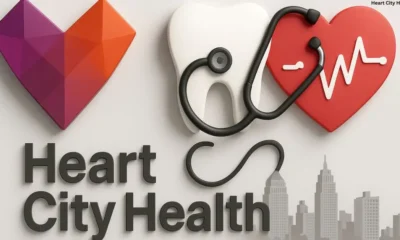
 GENERAL3 months ago
GENERAL3 months agoHeart City Health Dental: Expert Care for Every Smile
